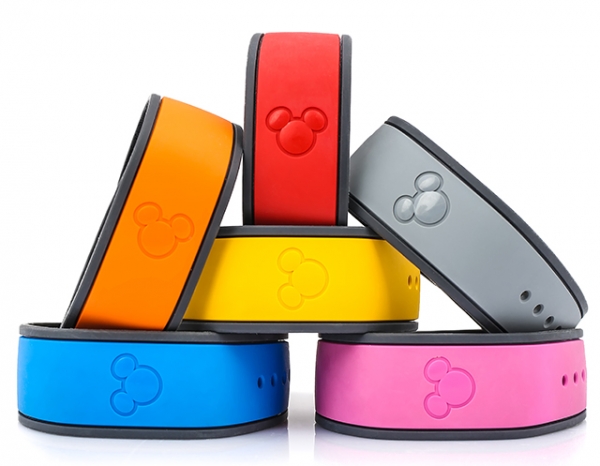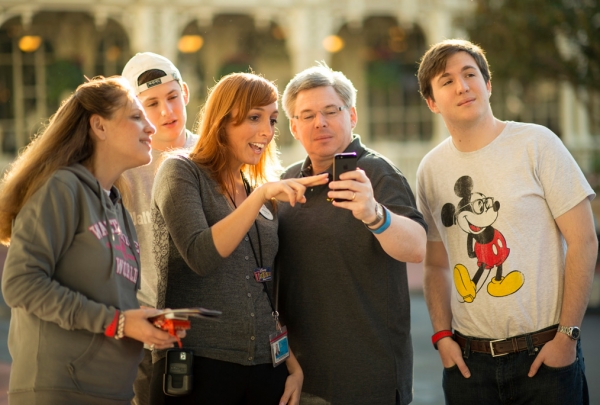3. Magic Bands are unreliable
Stop me if you can relate to this statement. When we have a slew of Magic Bands, some open the door while others don’t. Some provide access at admission gates to Disney theme parks while others don’t. And some pay for goods and services while others don’t. It’s the dirty little secret of the post-Magic Band era at Walt Disney World.
Disney visitors have learned to curate their various Magic Bands. Yes, the corporation is currently trying to reduce their overhead by sending fewer bands per vacationer. Guests who have visited often since 2013 understand why. My family has about eight boxes of Magic Bands sitting in a utility closet right now. We save them as keepsakes of our trip. What we learned as we tried to use each one is that for whatever reason, the failure rate is high.
Let’s think about the situation in terms of the average electronic device. For most mass consumer electronics, anything over 5 percent would seem like a lot. For Fitbit and Xbox 360 owners and the unfortunate souls who bought the Samsung Note S7, they’d kill for only 15 percent failure…but I digress.
These are consumer products I started thinking about my time at Disney since the advent of the Magic Band. Each one has garnered headlines for recalls and public indictments of their struggles. How does the Magic Band stack up?

Image: Disney
I’ve spent almost 50 days on campus over that time. To Florida residents, that’s not much. To people living outside the state, it’s a LOT. Friends tell me it’s too much time at Walt Disney World, which just goes to show that friends can be idiots. The point is that in considering the anecdotal failure rate for Magic Bands, just the ones I’ve witnessed and not including the ones I’ve heard about, it’s about 25 percent. Every fourth time we try to pay for goods, use the Disney Dining Plan, use the entry systems at parks, or get in our rooms, the technology fails. That’s waaaaaaay too high for something that needs to be automatic. If your credit cards failed that often, you’d be too embarrassed to use them.
My solution to this particular problem is an odd one. What I’d ask of Disney’s decision makers is that they cordially invite family members and friends to visit the park. Have them plan a trip just as any guest would. The personalization is crucial here. Random data on a spreadsheet regarding survey results is constructive, but it’s too neutral. Disney park planners need some skin in the game here. They need to get Magic Band feedback from loved ones who will be honest about their interactions with the devices. I suspect the comments would prove enlightening. Several years down the road, Magic Band technology still feels like it’s in beta.
4. The curious case of the fingerprint failure
Image: Disney
One of the most troublesome aspects of identifying Magic Band flaws is deciding whether the band is even the issue. I’ve already discussed the dining problem. It’s an aggravation, but it’s not the worst problem. The most frustrating aspect of Magic Band technology right now is the one I referenced in the introduction. Using the Magic Band and then a fingerprint identification to enter a park is mercurial at best. In more honest terms, it’s a broken system that fails as often as not.
When technology works right, you take it for granted. You only notice when it fails. That’s why the current park entry system at Walt Disney World is infuriating. Getting through the gates feels like random chance more than science. When I first set up my Magic Band and fingerprint in the spring of 2014, I used the wrong finger. It felt natural to me to use my left index finger in that moment. For the year that followed, I wanted to use my right index finger. And that’s how you get the blue light denying entry rather than the green light accepting entry. I accept those instances as user failure.
Amusingly, I spent the entirety of that year thinking, “I’ll pick the correct finger when I set up my next annual pass.” I promptly picked the wrong finger again for that one. Yes, Disney will allow you to switch, but it’s aggravating. More than anything, it’s the curse of the ambidextrous. I use both hands equally and never know what will feel natural in a given moment. That’s 100 percent on me.
The part that’s on Disney is everything else. I frequently wait in line at the fingerprint scanner, tap my Magic Band as required and perform the index finger ritual, only to discover that the blue light triggers instead of the green light. That’s on Disney. Technology likes this has to work reliably if it’s to hold such an important step in the process as authorizing park access. Walt Disney World receives 100,000 guests each day. Pay attention to the entry process the next time you’re standing in the line queue. How many blue lights do you see? How many of those are false negatives, attempts that should have led to successful gate entry? It’s a staggering number.
Image: Disney
I thought about this the last time I visited Animal Kingdom, which has the worst entry process of the four parks. The lines create a functional bottleneck, and the new metal detector system right in front of the Magic Band kiosks only magnifies the problem.
To my mind, the solution here is simple. For whatever reason, Disney tried to simplify the entry process by requiring guests to use only one finger. The outcome of this choice is that each would-be entrant has only a 10 percent chance of selecting the correct finger. Even when they pick right, the blue light still might come on. Access should require a full handprint. It’d actually produce fewer incorrect outcomes. My suspicion is that Disney chose a single finger since that narrows the surface area of the input device, but the saving of space came at a much higher price than they anticipated. The slowness of park access is artificially increasing the amount of traffic at the front gates. More green lights at the fingerprint identification kiosks would solve this problem while dramatically boosting consumer confidence in Magic Bands.
The core flaw with the technology is that it’s clearly a hybrid, compromised version of work between two groups, the outsiders Disney hired to work on the My Magic+ system, and the Imagineers who loyally keep the flame of Uncle Walt. Since the two parties famously butted heads on multiple issues, the resulting technology has odd limitations and fails in unexpected ways. It almost does enough but the shortcomings are glaring.
The Magic Band is similar to new credit card chip technology. It’s much better for Disney than it is for guests. The credit card chips operate much more slowly than the swiping system used for the past 15 years, and the only benefits of it are for the giant banks who own the cards. Consumers are the ones who suffer through all the problems. The same is true of Magic Bands. They’re a wonderful idea with many positives, but the failures are infuriating. If Disney would simply take a step back and acknowledge that they need to revise some of the current practices, Magic Bands would become perfect. Instead, theme park tourists have developed a love/hate relationship with them. They’re great in theory but imperfect in execution.




Comments
You should always bring identification, even for your own safety, you might have an accident f.e.
1. Castmembers who share their hate about Magicband with customers are unprofessional.
2.room key's, especially those plastic cards have simular poblems.
3. You mean Galaxy Note 7, not S7.
4. Yes, if you van not remember if you used left or right finger, it's not Magicband's fault.
That said, Magicband did cost hundreds of millions to implement and like all electronics tend to be buggy sometimes. I can see the advantages, but Disney did not implement it for your convenience. They want it to be cost cutting (less employees needed), getting and storing your personal information, learning your habits-sales-what you eat-drink,what rides you like etc. etc. That is the scary part for some of us. And i think they should always give you the option to stay away from RFID as a whole!
I thought that Disney was modifying the Magic Band to look like a disc which obviously would hold more information. I think that maybe the chip in the present Bands is too small for all the information it is supposed to hold. I do not stay on property, but use the band only for park entry with my annual pass. Hopefully Disney will com up with a solution that suits everyone.
Only spent about 10 days on property with the magic band. only had issues with 1 of our party, and it was the finger print scanner at entry. now i'm not sure why, did she keep moving her finger (very narrow) at different angles each time, and thus the image wasn't recognized? was the fingered rolled one way or another?
But we never had problems with FP+, Photo or even paying for meals.
I get where your coming from with requiring a full handprint for entry, but as someone who clocks in for work that way I sometimes have to scan my hand half a dozen times or more. I once had my manager re-enter my handprint only to have the same issue by the time I clocked out,